今天帶大家整合目前開發的Line Chatbot與昨天建置的Custom Vision模型整合。
首先我們先處理使用者在官方帳號輸入照片的Image Webhook Event其資料格式如下:
{
"destination": "xxxxxxxxxx",
"events": [
{
"replyToken": "nHuyWiB7yP5Zw52FIkcQobQuGDXCTA",
"type": "message",
"mode": "active",
"timestamp": 1462629479859,
"source": {
"type": "user",
"userId": "U4af4980629..."
},
"message": {
"id": "325708",
"type": "image",
"contentProvider": {
"type": "line"
}
}
}
]
}
可以看到Image Webhook Event的資料中並無任何關於照片的資料,是因為Webhook並不會真的把照片的資料拿來傳送,實際上照片是儲存在Line Platform,我們收到的Webhook Event只是告訴我們官方帳號收到照片的事件,那如果想要取得該照片該怎麼做呢?
Line有提供Get content by users API,可參考Line Messaging API-Get content sent by users
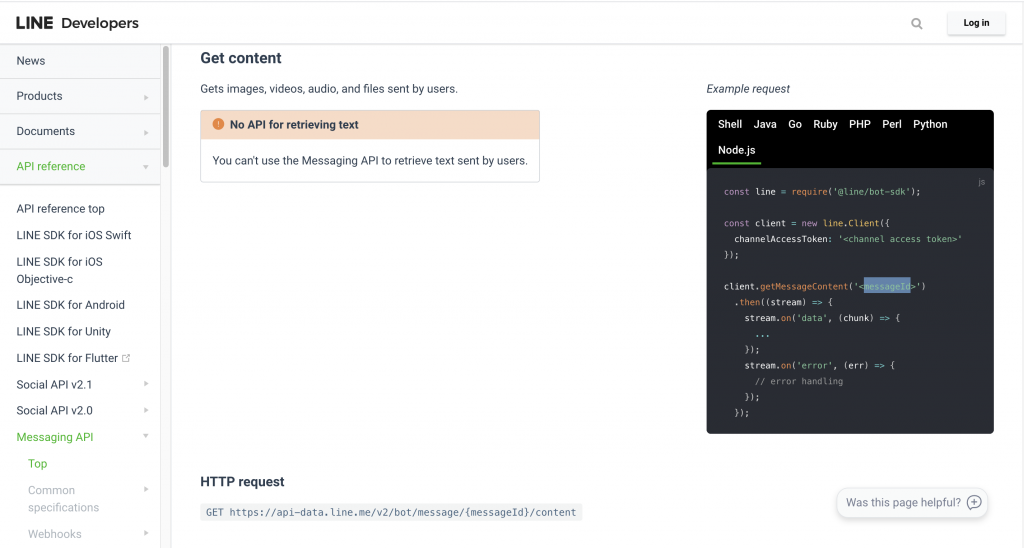
Get content API透過用戶輸入訊息的messageId取得該訊息的images, videos, audio,files等檔案資料,messageId可由上方Image Webhook Event資料中取得。
當應用需求會需要儲存用戶輸入的圖片,這時候可以使用Azure Storage,其Node.js SDK如何操作可參Microsoft Azure Storage SDK for Node.js

我們修改Dispatcher.ts程式,新增處理Image Webhook Event的邏輯
const messageDispatcher = async(message: EventMessage, replyToken: string, userId: string) => {
switch (message.type) {
case "text":
const phrase = message.text
await workflow.textUnderstanding(phrase, replyToken)
break
case "location":
const GPS = {
lat: message.latitude,
lon: message.longitude
}
await workflow.findMaskStore(GPS, userId)
break
case "image":
const messageId = message.id
let imageBuffer = await workflow.getImageContent(messageId)
console.log(imageBuffer)
await workflow.predictionImage(imageBuffer, replyToken)
break
default:
break
}
}
再來在Workflow.ts中新增一支 getImageContent( ) function 取得用戶輸入的Image
export const getImageContent = async (messageId: string): Promise<any> => {
let chunks = [] as Array<any>
let imageBuffer: any
const lineClient = new Client(LINE)
await lineClient.getMessageContent(messageId).then(stream => {
return new Promise((resolve, reject) => {
stream.on('data', (chunk) => {
chunks.push(chunk)
});
stream.on('end', () => {
imageBuffer = Buffer.concat(chunks)
resolve()
});
stream.on('error', () => {
reject()
});
})
}).catch(err => console.log(err))
console.log(imageBuffer)
return imageBuffer
}
Day [28] Azure 認知服務-Custom Vision 建置我們已經訓練完成Model,若要將影像提交至預測 API端點以程式辨識影像,必須先發佈Iterations。選取 [Performance] 後點選[Publish]並指定發行的Model名稱。這會讓您的模型可供您自訂視覺 Azure 資源的預測 API 存取。
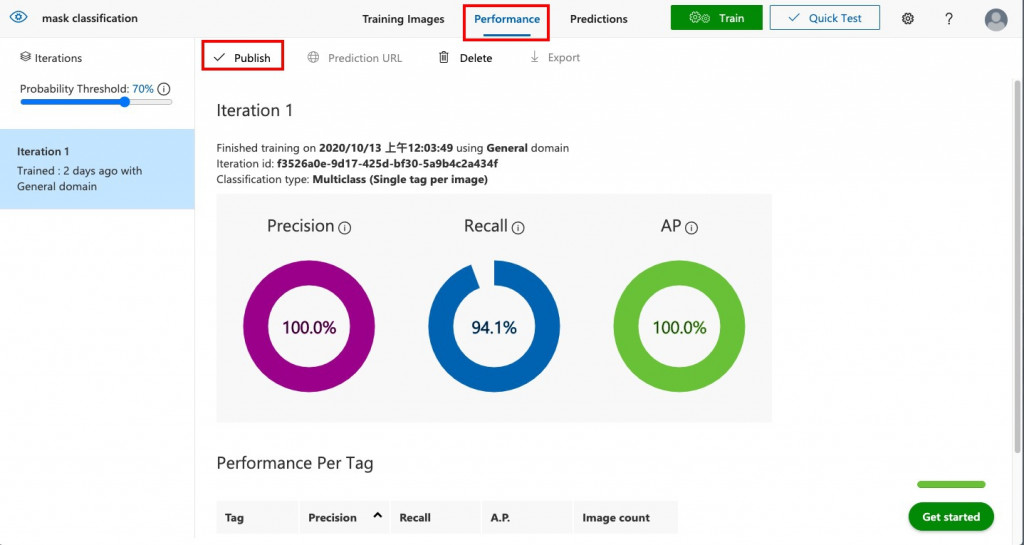
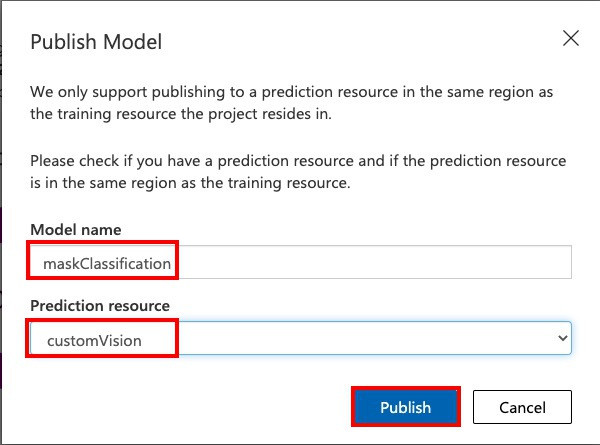
成功發佈Model之後,您會看到左側欄位中的Iterations旁出現「PUBLISHED」標籤。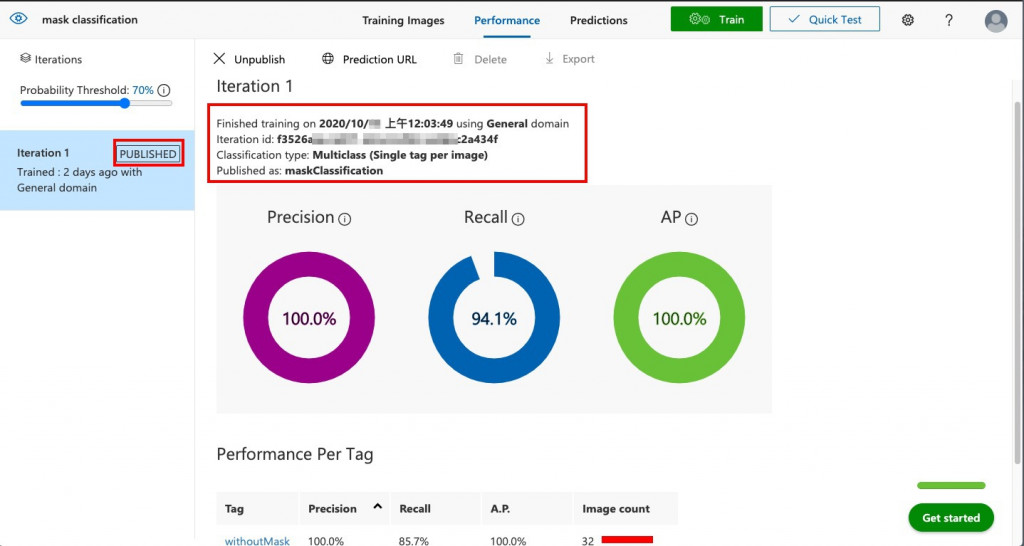
應用程式要使用Custon Vision SDK來辨識影像,我們需要Custon Vision專案的Project Id, Key, Endpoint 才能與服務互動。前往Custom Vision入口網站選取右上方的「齒輪圖示」。 在清單中可以取得金鑰等資訊如下圖:
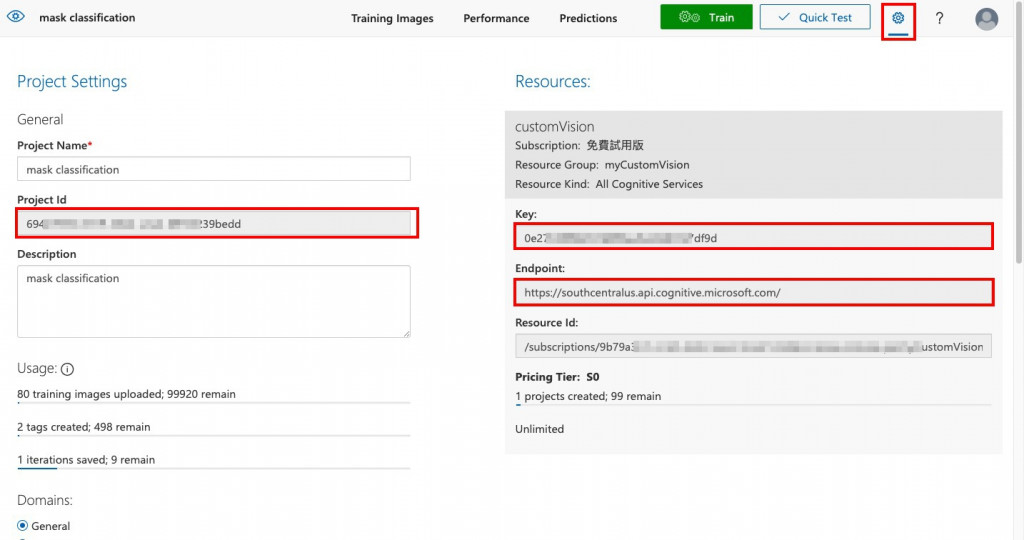
在Day [15]時我們將Chatbot會使用到的重要設定參數交由config.ts程式管理,現在我們把LUIS的金鑰等重要資訊新增至config.ts:
export const CUSTOMVISION = {
projectId: "<REPLACE-WITH-YOUR-CUSTOMVISION-PROJECTID>",
key: "<REPLACE-WITH-YOUR-PREDICTIONKEY>",
endpoint: "<REPLACE-WITH-YOUR-CUSTOMVISION-ENDPOINT>"
}
現在要我們使用Azure Custom Vision辨識圖片,首先需要在Azure Functions Webhook 專案中安裝Azure Custom Vision Node.js moudule,其library完整說明可參考官方文件@azure/cognitiveservices-customvision-prediction package在終端機輸入npm install --save @azure/cognitiveservices-customvision-prediction
$ npm install --save @azure/cognitiveservices-customvision-prediction
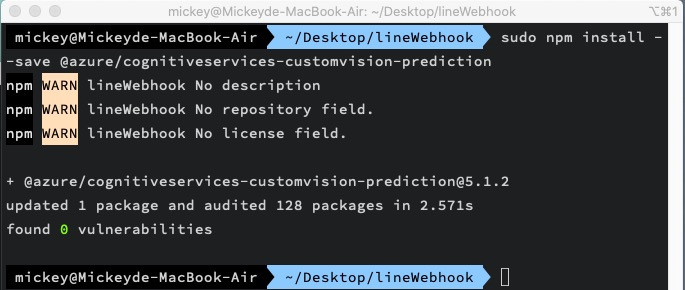
完成config.ts基本設置後,明天我們將繼續完成Workflow.ts中的predictionImage( ) Function,在Azure Functions中使用上面安裝的Nods.js @azure/cognitiveservices-customvision-prediction Module 辨識圖片以完成Chatbot的影像辨識服務!
